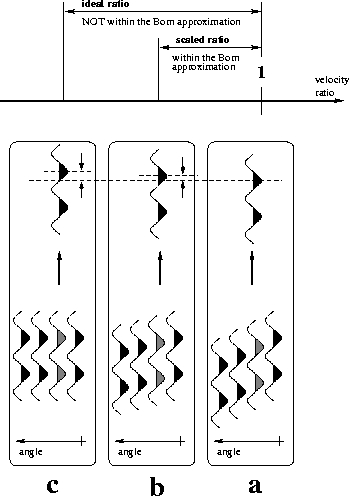|
ratscale
Figure 3 An illustration of velocity ratio scaling which makes the Born approximation valid. (a) is a gather extracted from the original image ( |  |
A possible answer to this question, although not necessarily the only one, is that we need to be conservative at the time we generate the improved image. For this, we can scale the velocity-ratio parameter surface Sava (1999), which controls the amount of enhancement in the image closer to unity, that is, closer to the original image (Figure 3).
|
ratscale
Figure 3 An illustration of velocity ratio scaling which makes the Born approximation valid. (a) is a gather extracted from the original image ( |  |
The shortcoming of this procedure is that we reduce the magnitude of image perturbation, although we preserve a more important parameter - its direction. The scaled-down restored image falls within the limits of the Born approximation with respect to the original; therefore, we can safely invert for the slowness perturbation. However, the slowness perturbation we obtain depends on the scaling we have done on the images, although it has the correct direction.
Next we need to scale the slowness perturbation back up to the value corresponding to the correct velocity ratio measured from the residual migrated images. So, how do we do this? A possible solution is to run a line search using the slowness perturbation we have inverted, with the goal of maximizing the energy of the migrated image. Mathematically, this goal can be expressed as
| |
(3) |